Whether the jigsaw puzzle in front of you is your first one or you have a few under your belt already, having a specific puzzle strategy can ease the puzzling process and prevent frustration.
There are a few different approaches on how to do a jigsaw puzzle, and we’ll cover most of them below, but universal rules that every puzzler swears by apply too. We’ll go over these strategies for jigsaw puzzles in a sec.
Still, though, it’s not necessary to over-strategize and become overwhelmed, digging into various puzzle solving strategies. The main thing is to have fun and relax while solving a beautiful jigsaw puzzle. Am I right? 😊
We’ll cover the whole ideal puzzle environment setup in another post.
Table of Contents
Finding Corners and Edge Puzzle Pieces
No matter your experience or personal style of puzzling, going through all the pieces and picking out edges and corners is the main rule of thumb. If you follow only one piece of advice on how to do a puzzle, let it be this one.
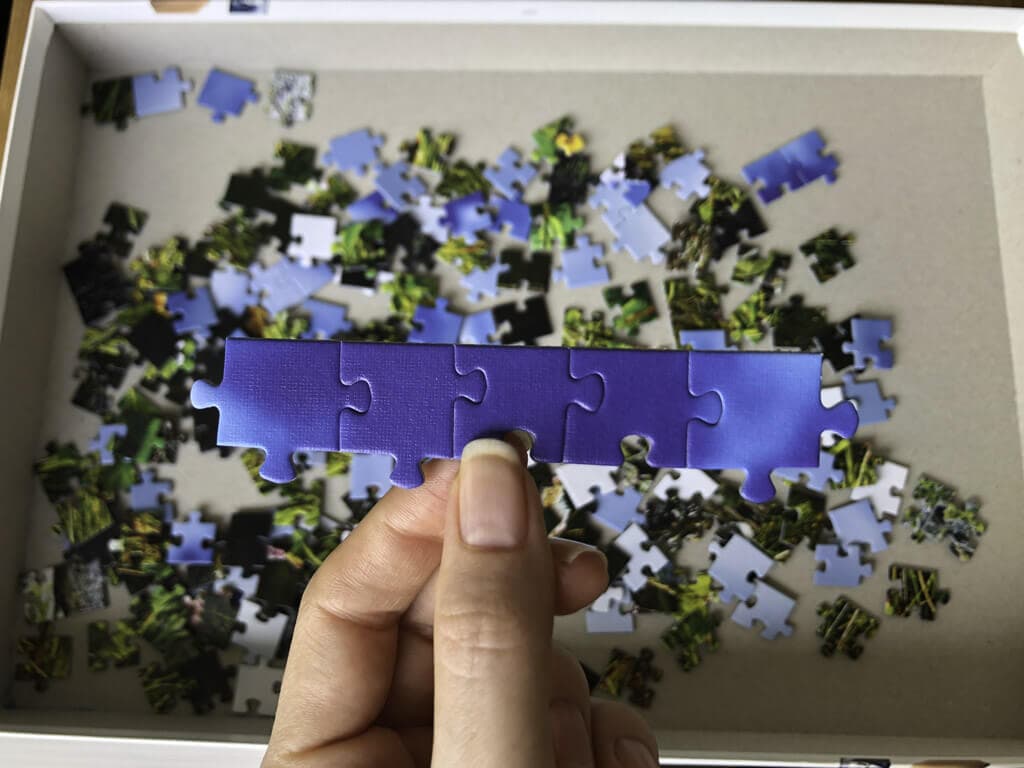
You don’t even need to pay attention to the picture at all. Grab a handful of puzzle pieces and take out those that clearly form the edges of the puzzle. A few of them will probably slip, depending on how many pieces in total you have. But that’s okay, no need to sweat it.
I often enjoy taking out these individual pieces in an armchair or on a sofa when watching TV or just enjoying a quiet time.
Assemble the edges together and form a frame of the whole picture.
Sorting Puzzle Pieces & Flipping Them Upwards
You can combine this step with the previous one. Now you’ll be paying attention to the actual picture. Study it on the box first, noting any distinct patterns and areas of color.
Take each and every puzzle piece in the hand, look at it, decide where and whether to sort it out, and place it on its temporary spot on your puzzling base – that can be just the floor, a table, a puzzle mat, or a board/panel.
Depending on the complexity of your image, you might have a hodge-podge of colors or only a few different shades of one particular color. Go with your gut when it comes to sorting.
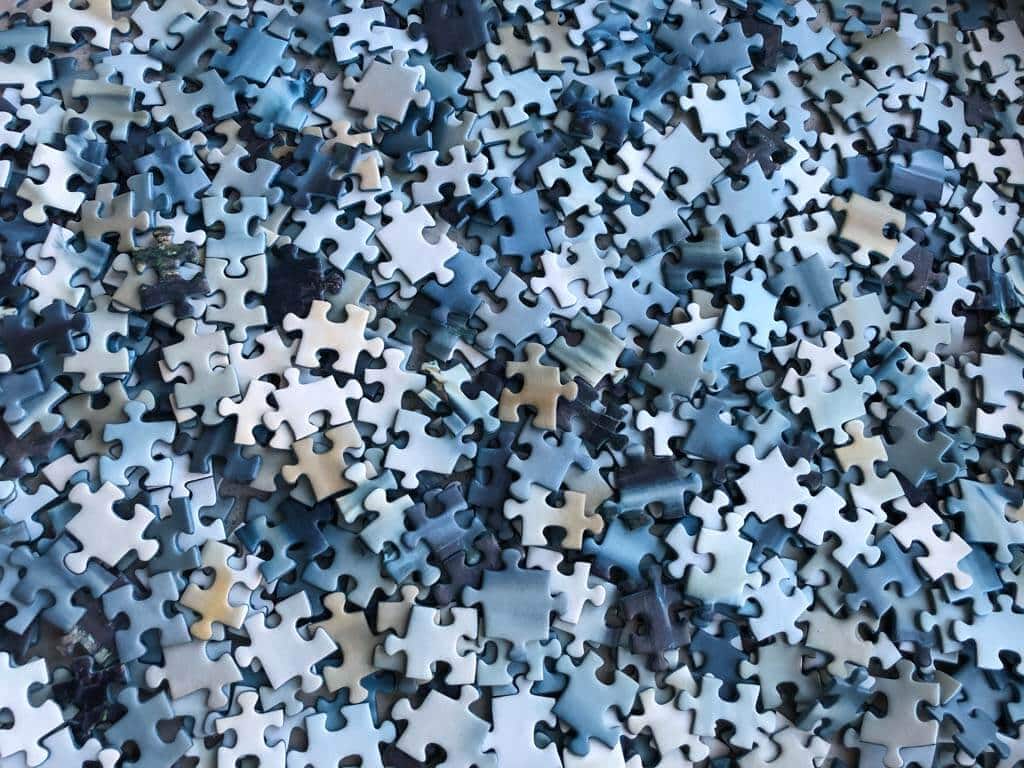
Many puzzlers sort out all the pieces into different piles. That works great if your picture is an artwork or it’s immediately obvious where each piece may belong depending on its color. The piles can stay piles if you have a large enough area to work and no pet or a child to mess them up. Alternatively, use boxes, trays, or even wide bowls.
If more people are assembling a puzzle image, dividing it into the individual patterns also nicely distributes the labor so that each family member can work on their own section.
With landscape puzzles, I find that often what first appears as a forest ends up being e.g. a lake. Some motives can be this deceiving. That’s why I sort out only what I’m clear about and go through the pile of the remaining pieces (all flipped upwards) several times over the course of solving a jigsaw puzzle.
Taking Out Distinct Pieces
A puzzle piece can form part of a wide area, be it a block of color or a distinct pattern. Then there are a few pieces, which naturally form a border. A border of a person against a background, a border of the mountains against the sky…
Basically, these are the pieces where two different patterns meet. I like to take these out soon and create frames of patterns within the whole puzzle frame.
This works well if a puzzle is of a smaller size, about up to 2,000 pieces. Once I have a larger puzzle and have to use e.g. a rolling mat, such a puzzle tends to be more fragile.
There are often pieces in every puzzle that grab your attention immediately. Go with the flow and pay attention to these first.
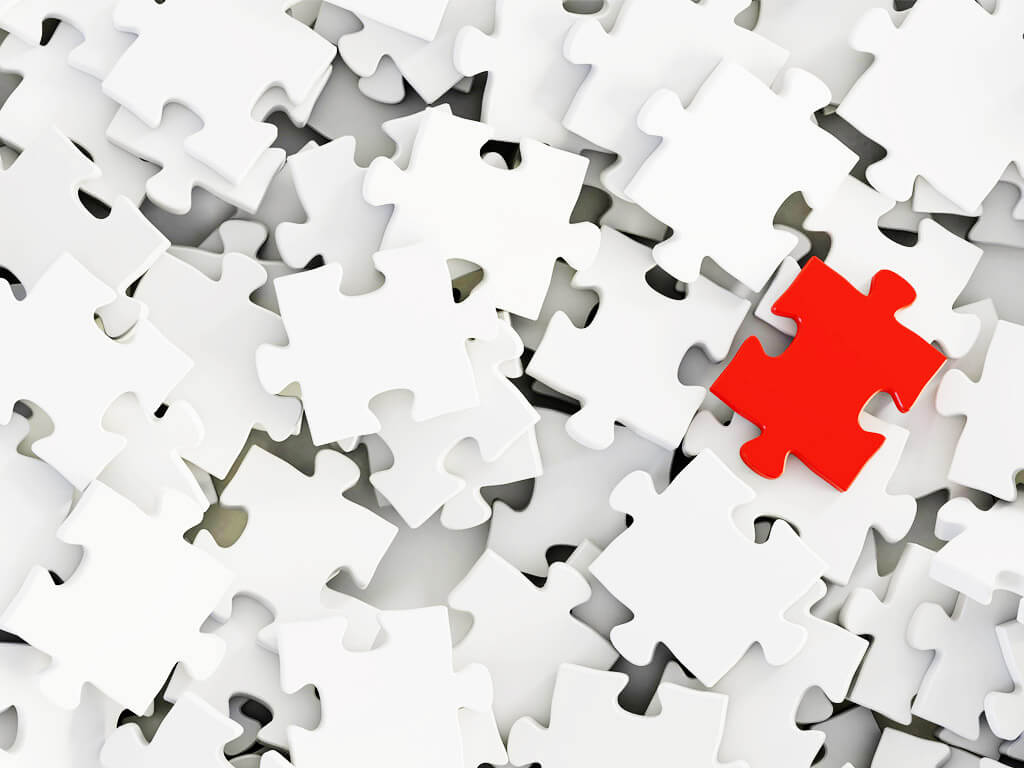
Focusing on One Area at a Time
It’s perhaps obvious but you shouldn’t try to work on many different clusters at one time. If you’re assembling a dog, don’t keep glancing at what’s all around. Focus.
Just like with any project, breaking it into smaller actionable projects makes it a lot more feasible.
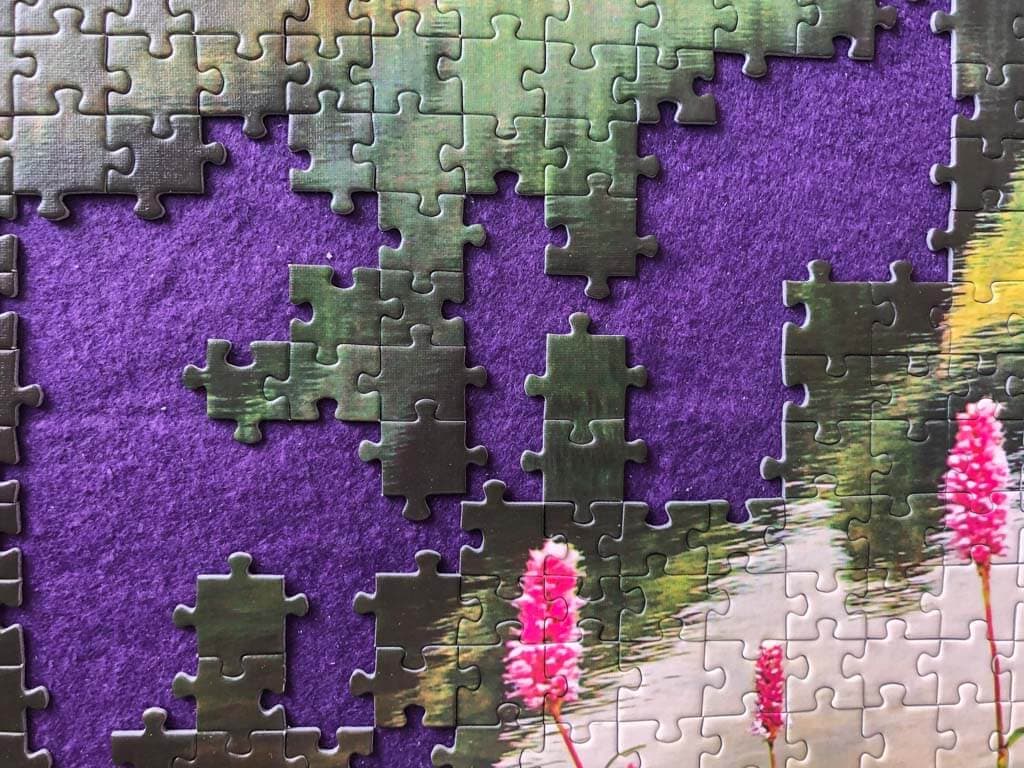
If you’re working on a difficult area of color/pattern, you can also benefit from having the puzzle pieces sorted by their individual shapes. Sometimes it’s clear that a puzzle piece with e.g. two holes next to each other will fit in that empty spot. Having the shapes separated like that will help you first grab pieces, which morphologically fit the best.
Finishing a segment feels rewarding and you get a nice shot of dopamine. Plus, eliminating one specific color and pattern brings out colors and patterns in the remaining pieces.
Adjusting Your Jigsaw Puzzle Strategy as You Go
My strategy differs a bit with each image and, even more so, it tends to change as I go on about puzzling.
You don’t need to blindly follow any jigsaw puzzle strategy tips when your gut tells you to do something different.
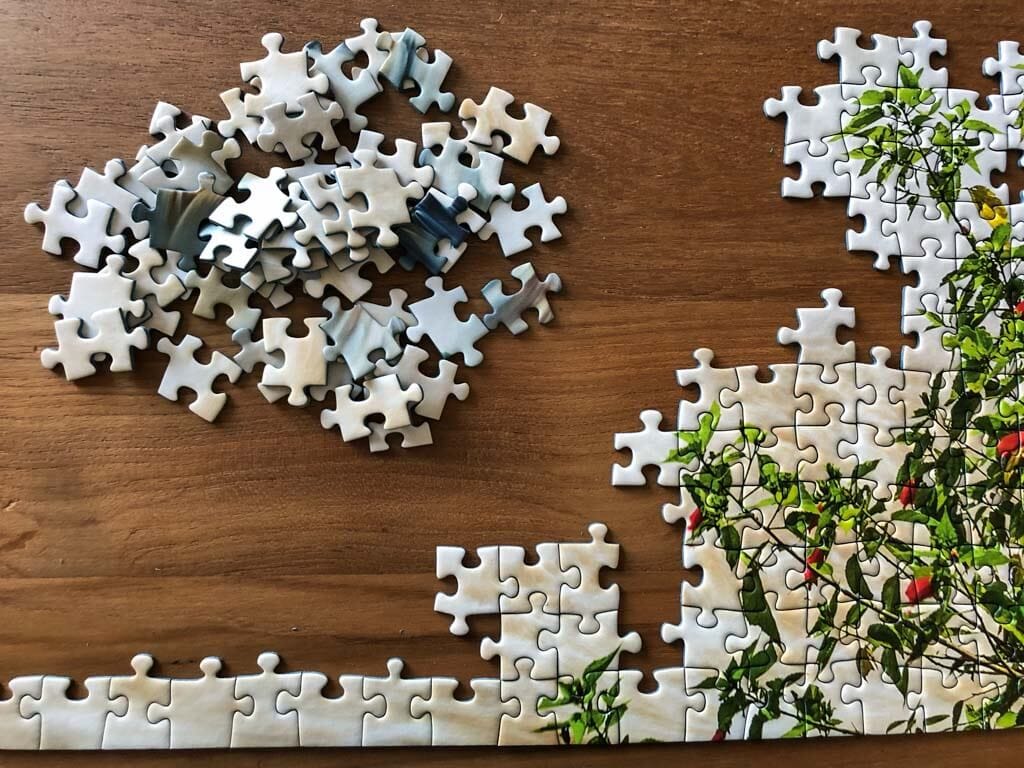
When you’re working away at a section, you stop having fun, then just stop and look around. You may notice a clear new pattern elsewhere. If you feel the urge to attend to it, go for it. It’s your project after all. A strategy helps, but use it to your advantage and don’t let it dictate your free time. 🙂
Taking Breaks
Let’s face it – solving a puzzle can become frustrating. It may be a difficult picture, you might be getting distracted… Even the quality of the puzzle you bought can play a big role, since cheaper puzzles often have pieces that fit everywhere! Sometimes a pattern is just too crazy and placing each puzzle piece correctly takes ages.
If you become frustrated or simply stop enjoying working on your puzzle, take a break. It’s okay and it’s a feeling most puzzle fans face at one point or another.
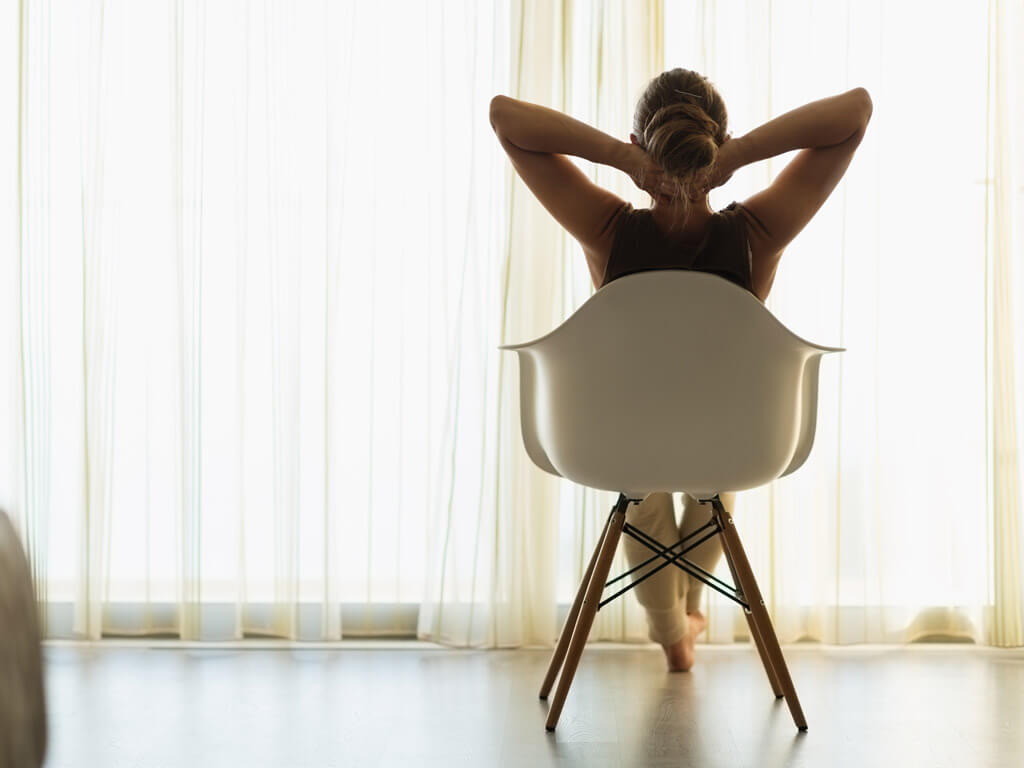
You’ll find that when you come back to the puzzle a bit later, it suddenly becomes easier and you have fun with it again.
Bring Some Chaos
Sometimes, just sometimes, it doesn’t hurt to bring a bit of chaos into your puzzle solving. Most of us do puzzles in our free time and at times you only get a few minutes in between tasks. That’s the perfect time for (coordinated) chaos.
I just inspect what I’ve finished, look at patterns.. and then I look at my piles of puzzle pieces waiting to be used and often the perfect piece whose destination I know right away just pops up out of nowhere.
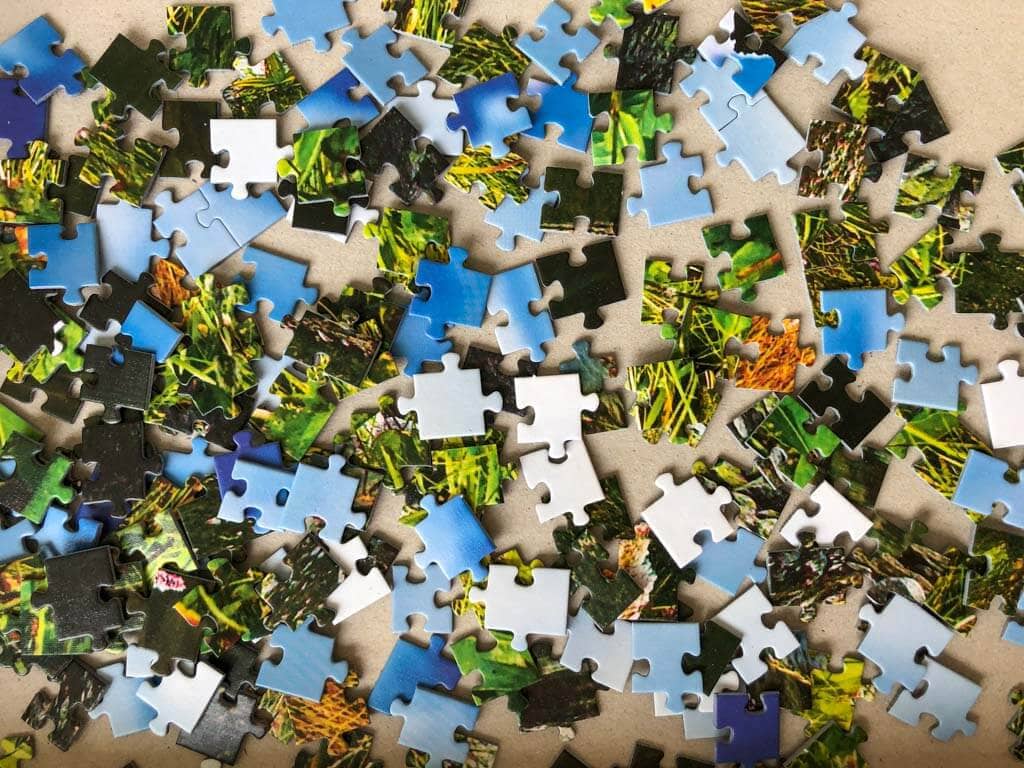
I think it has to do with training our eyes and subconsciously the brain too to adjust to the patterns of the puzzle.
Finishing a Puzzle
Those are the times when I forget to drink, eat, or take a toilet break. You’re 20, 10, 5 pieces away from finishing! How exciting that is!
Congratulations on finishing the puzzle! Run your hand across it and enjoy the feeling of satisfaction.
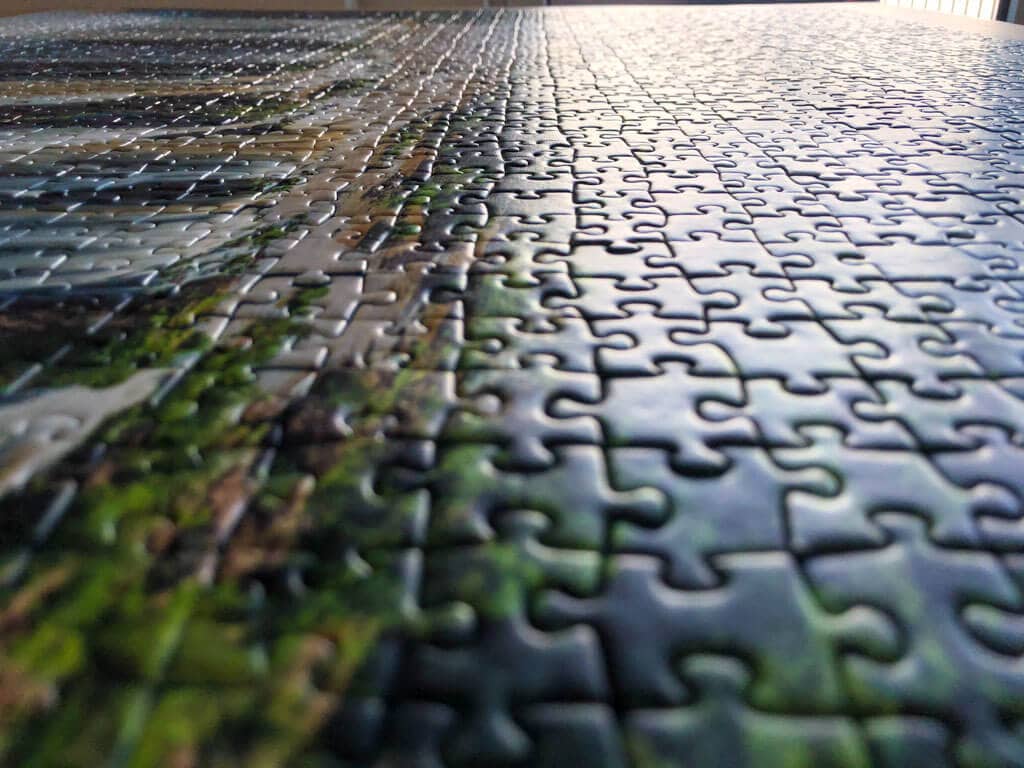
Comment below and let me know what your own process is like. Do you ever get frustrated when solving a puzzle?


Thanks for the tips, we were one day into the Texas Arctic storm when I found a 500 piece puzzle tucked away in a closet while looking for blankets so decided to put it on a foam board I had for a craft project. It looked complicated but I was up for a challenge which turned into an addiction!! Losing Power made it a little slow but soon turned into 1.30am 2-3days. Yes it was triumphant when my husband put in the final piece now it’s ready for framing, I did do corners and outline first but after some frustration I came back and divided colors much easier faces were the hardest thanks Julie
Hello Julie, I’m glad to hear the puzzling made the crazy snow storm a little more bearable and hope you found the blankets too!
Putting the last piece in is just the most satisfying feeling 😁 Now you just need to get another puzzle. And another.. and another. The addiction gets real 😊
Nice tips!
I also divide my puzzle pieces into shapes when approaching the end. Like “no sticky outies” “4 sticky outies” etc. That makes the finishing soooo much faster and actually really fun and enjoyable too !
Yes! That’s the way to go 🙂 I’m now working on a puzzle with a lot of sky of the same color, no clouds! So yes, it’s all about shapes now 🙂 Happy puzzling, Emma, and thanks for stopping by!